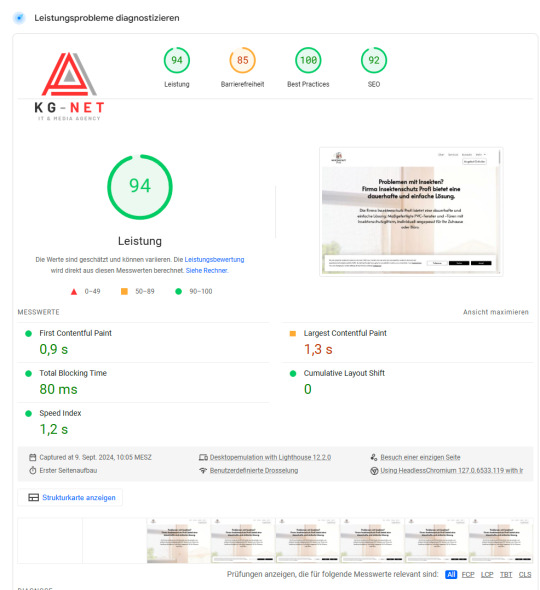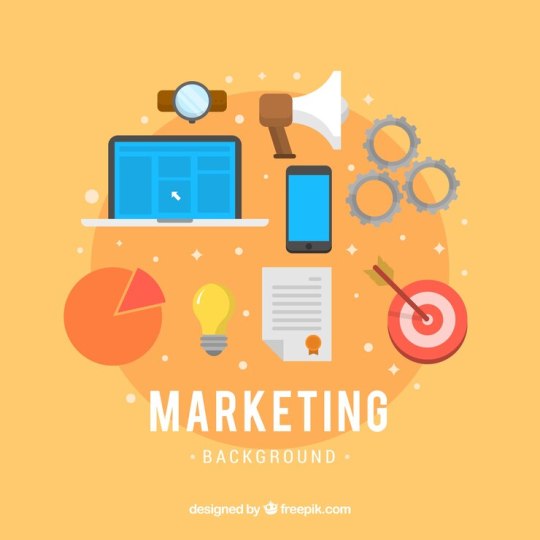#be locally seo
Text

when you're about to get your morally bankrupt batsh*t insane ass strapped to a table and have horrible things happen to you but you felt cute so you took a photo beforehand. Kim Jae Wook ily never stop doing this ever
#tv: death's game#death's game#seo in guk#park so dam#kim jae wook#kim jae uck#kim ji hoon#kdrama#local gay watches k-dramas.txt#he posted this on his Instagram with 👨🎨🪚🩸 in a line when i tell you i lost my sh*t. when i tell you i nearly yelled i cannot with him
285 notes
·
View notes
Text

BOOST your Google Business Profile TO THE TOP of local search with www.VictoryLocal.co.uk
29 notes
·
View notes
Text

#backlinks#local seo#google ads#facebook ads#facebook marketing#paypal#cashapp#pay me to be cute#cash app account#verified cash app account#buy verified cash app account#cash app
15 notes
·
View notes
Text
What is the best way to optimize my website for search engines?
Optimizing Your Website for Search Engines:
Keyword Research and Planning
Identify relevant keywords and phrases for your content
Use tools like Google Keyword Planner, Ahrefs, or SEMrush to find keywords
Plan content around target keywords
On-Page Optimization
Title Tags: Write unique, descriptive titles for each page
Meta Descriptions: Write compelling, keyword-rich summaries for each page
Header Tags: Organize content with H1, H2, H3, etc. headers
Content Optimization: Use keywords naturally, aim for 1-2% density
URL Structure: Use clean, descriptive URLs with target keywords
Technical Optimization
Page Speed: Ensure fast loading times (under 3 seconds)
Mobile-Friendliness: Ensure responsive design for mobile devices
SSL Encryption: Install an SSL certificate for secure browsing
XML Sitemap: Create and submit a sitemap to Google Search Console
Robots.txt: Optimize crawling and indexing with a robots.txt file
Content Creation and Marketing
High-Quality Content: Create informative, engaging, and valuable content
Content Marketing: Share content on social media, blogs, and guest posts
Internal Linking: Link to relevant pages on your website
Image Optimization: Use descriptive alt tags and file names
Link Building and Local SEO
Backlinks: Earn high-quality backlinks from authoritative sources
Local SEO: Claim and optimize Google My Business listing
NAP Consistency: Ensure consistent name, address, and phone number across web
Analytics and Tracking
Google Analytics: Install and track website analytics
Google Search Console: Monitor search engine rankings and traffic
Track Keyword Rankings: Monitor target keyword rankings

7 notes
·
View notes
Text
The Power of Local SEO: A Vital Strategy for Small Businesses

Local SEO is essential for small businesses aiming to increase visibility and attract local customers. By optimizing for local search, businesses can connect more effectively with nearby customers who are searching for their services or products. With nearly 46% of Google searches being local, this strategy is a must for any small business looking to grow in their community.
What is Local SEO?
Local SEO, or Local Search Engine Optimization, is the practice of optimizing a business’s online presence to rank higher in local search results. This means ensuring that your business shows up when people search for services in your area, such as “coffee shop near me” or “best plumber in [city name].” For small businesses, being visible in these searches is critical to capturing local customers and growing your brand.
Why Local SEO Matters for Small Businesses
1. Increased Visibility and Traffic
Local SEO helps your business rank higher in search results, making it easier for customers to find you. Studies show that 72% of consumers who perform a local search visit a store within five miles of their location. This means that if your business ranks well, you're likely to see more foot traffic, which can translate into more sales.
2. Higher Conversion Rates
Local SEO doesn’t just bring traffic—it brings the right traffic. By targeting users who are actively searching for products or services nearby, businesses are more likely to see high conversion rates. In fact, 80% of local searches on mobile devices lead to sales, as these searches often come from users with immediate buying intent.
3. Cost-Effective Marketing
For small businesses with limited marketing budgets, local SEO offers a cost-effective way to attract customers. Setting up and optimizing listings on platforms like Google My Business is free, and these listings can have a powerful impact on local search results. Compared to traditional advertising, local SEO can deliver a higher return on investment by targeting customers who are already interested in what you offer.
4. Builds Trust and Credibility
A strong local SEO strategy helps build trust and credibility with potential customers. Consistent information across online platforms, coupled with positive customer reviews, enhances your business’s reputation. As customers see consistent, reliable information, they’re more likely to choose your business over competitors. This trust leads to increased loyalty and positive word-of-mouth referrals.
5. Competitive Advantage
By investing in local SEO, small businesses can compete with larger companies and national brands. Optimizing for local queries ensures your business shows up when people are looking for services in their area. This levels the playing field and allows small businesses to attract local customers who prefer to shop nearby rather than with larger, less personal corporations.
6. Improved Mobile Search Performance
With more consumers relying on their smartphones for local searches, optimizing for mobile is essential. If your business isn’t optimized for local search, you risk missing out on a large segment of potential customers. Local SEO ensures that your business is easy to find on mobile devices, allowing you to capture customers who are on the go and ready to buy.
Key Statistics That Highlight Local SEO's Importance:
46% of Google searches are for local businesses.
82% of people use their phones for “near me” searches.
80% of local searches on mobile devices convert into sales.
40% of local SEO campaigns generate an ROI of 500% or more.
Conclusion
Local SEO is not just an option for small businesses—it’s a necessity. It improves visibility, drives traffic, builds trust, and can ultimately lead to increased sales and customer loyalty. In a rapidly evolving digital landscape, small businesses must embrace local SEO to remain competitive and relevant in their markets.
By prioritizing a local SEO strategy, small businesses can thrive and outpace their competition, connecting with customers who are looking to support businesses in their communities.
#digital marketing#google ads#emailmarketing#search engine marketing#search engine optimization#local seo
3 notes
·
View notes
Text
Local Citation and SEO Services
Description:
Off-Page SEO, particularly through strategic backlink building, plays a crucial role in elevating your website’s visibility and authority. By creating high-quality backlinks through methods like forum participation, profile creation, image submissions, local citations, PDF sharing, and article submissions, you’re not just driving traffic to your site—you’re building a robust web of connections that search engines trust. Each backlink acts as a vote of confidence, signaling to search engines that your content is valuable and relevant. This not only improves your search engine rankings but also enhances your brand’s credibility and reach, drawing in more organic traffic and potential customers. Whether it's through informative articles, engaging forum discussions, or authoritative local citations, every backlink strengthens your online presence, helping your business to stand out in a crowded digital landscape.
Phone:
923285003226
Email:
#seo services#seo#backlinks#search engine optimization#marketing#forum posting#profile backlinks#link building#local seo
3 notes
·
View notes
Text
#seo#seo expert#seo expert india#seo services#local seo#localbusiness#buisness#seo consultant#benefits of seo#search engine optimization#business listings#business listing website#seo strategy#website design india#web design#web design india#website design#web designers#website#digital marketing agency
4 notes
·
View notes
Text
Maximizing Ecommerce Success: A Comprehensive Guide to Key Performance Indicators (KPIs)

Introduction
In the dynamic landscape of online retail, performance metrics are the compass guiding businesses toward success. Key Performance Indicators (KPIs) serve as crucial milestones, directing ecommerce entrepreneurs to navigate the complex realm of sales, marketing, and customer service. In this comprehensive guide, we at RMRKBL Marketing delve into the intricate world of KPIs, offering profound insights to empower your business decisions and drive unparalleled growth.
Unveiling the Essence of Performance Indicators
A performance indicator, a beacon in the data-driven journey, is a quantifiable measurement aligning with specific goals. Picture an online retailer aspiring to boost site traffic by 50% in the next year – a noble ambition. Key indicators could include daily unique visitors, traffic sources (paid advertising, SEO, brand advertising), or the holy grail of customer lifetime value.
Decoding Key Performance Indicators
Amidst a plethora of potential metrics, the crux lies in identifying key performance indicators (KPIs) – impactful data points succinctly reflecting progress toward defined goals. In this pursuit, Shopify's robust reporting and analytics emerge as invaluable tools, boasting over 60 pre-built dashboards to illuminate trends and catalyze informed decision-making.
The Significance of KPIs
Why are KPIs as vital as strategy and goal setting? They transcend mere statistics, offering actionable insights that propel strategic decision-making. Without KPIs, businesses risk navigating uncharted waters, relying on intuition rather than data-driven precision. Harnessing KPIs fosters a deeper understanding of your business and clientele, fostering informed strategies for online sales growth.
Classifying Key Performance Indicators
KPIs, versatile in nature, span qualitative, quantitative, predictive, and historical dimensions, permeating various business operations. In the ecommerce domain, KPIs elegantly align with five core categories: Sales, Marketing, Customer Service, Manufacturing, and Project Management.
Sales: A Symphony of Success
In the realm of sales, mastering KPIs is akin to orchestrating a symphony of success. Ecommerce retailers can fine-tune their performance through vigilant tracking of crucial metrics such as total sales, average order
size, gross profit, average margin, and more. Each metric unveils a facet of your business, from understanding customer behavior through conversion rates and shopping cart abandonment rates to strategic insights on product affinity and competitive pricing.
Unlocking Sales KPIs
1. Total Sales
Ecommerce success hinges on understanding sales patterns. Monitor sales on an hourly, daily, weekly, monthly, quarterly, and yearly basis to discern trends and capitalize on peak periods.
2. Average Order Size
Delve into customer spending habits with the average order size, a pivotal KPI reflecting the typical expenditure per order. This insight informs pricing strategies and product bundling opportunities.
3. Gross Profit
Measure business efficiency by calculating gross profit – the difference between total sales and the cost of goods sold. A nuanced understanding ensures profitability and strategic decision-making.
4. Conversion Rate
Efficiency in converting visitors to customers is paramount. The conversion rate, expressed as a percentage, illuminates the success of your ecommerce site in turning visitors into buyers.
5. Customer Lifetime Value (CLV)
The heartbeat of sustainable growth lies in the customer lifetime value. Nurture long-term relationships by understanding how much a customer contributes over their engagement with your brand.
6. Revenue per Visitor (RPV)
Evaluate the effectiveness of your site in converting visitors into revenue. Low RPV prompts a deep dive into analytics, optimizing the user experience to drive more online sales.
7. Customer Acquisition Cost (CAC)
Strategically invest in customer acquisition by deciphering the cost of acquiring new customers. Analyze marketing spend breakdown to ensure efficient customer acquisition.
8. Inventory Levels
Maintain optimal stock levels by closely monitoring inventory metrics. Insights into stock turnover, product velocity, and sitting stock guide inventory management strategies.
9. Competitive Pricing
Benchmark against competitors by scrutinizing pricing strategies. An agile approach to pricing ensures your business remains competitive and attuned to market dynamics.
10. Product Affinity
Uncover cross-promotion opportunities through product affinity analysis. Identify products frequently purchased together, fueling targeted marketing strategies.
11. Product Relationship
Strategically plan cross-selling tactics by understanding which products are viewed consecutively. Leverage this KPI to enhance product recommendations and elevate user experience.
12. Churn Rate
Customer retention is paramount. The churn rate reveals how swiftly customers are departing. Swift action can mitigate losses and foster sustained loyalty.
13. Cost per Click (CPC)
For paid advertising success, track the cost incurred for each click. Optimize ad campaigns by aligning CPC with conversion rates, ensuring a balanced marketing budget.
Marketing Mastery: Unleashing Potency Through KPIs
Marketing KPIs wield immense power in sculpting the success story of your ecommerce venture. From driving website traffic to deciphering customer behavior, these metrics guide strategic marketing endeavors.
Navigating Marketing KPIs
1. Website Traffic
Website traffic serves as the heartbeat of ecommerce success. Monitor the total number of visits to your site, interpreting trends and refining marketing strategies accordingly.
2. New Visitors vs. Returning Visitors
Distinguish between first-time visitors and returning patrons. This insight aids in assessing the efficacy of digital marketing campaigns and tailoring strategies for diverse audiences.
3. Time on Site
Evaluate user engagement by analyzing the time visitors spend on your website. A deeper engagement with blog content and landing pages signals brand affinity.
4. Bounce Rate
High bounce rates demand attention. Investigate the reasons behind visitors exiting after viewing a single page, optimizing user experience and content relevance.
5. Page Views per Visit
Navigate user journeys by understanding the average number of pages viewed during each visit. Balance engagement with ease of navigation to enhance the user experience.
6. Average Session Duration
Dive into user behavior with the average session duration. Longer durations indicate profound interactions with your site, particularly with blog content and landing pages.
7. Traffic Source
Decipher the origins of website traffic through the traffic source KPI. Channel-specific insights guide focused marketing efforts, whether from organic search, paid ads, or social media.
8. Mobile Site Traffic
Optimize for mobile success by monitoring the influx of users accessing your store via mobile devices. A mobile-friendly site ensures a seamless experience for a diverse audience.
9. Newsletter Subscribers
Harness the potential of email marketing by tracking newsletter subscribers. Analyze demographics to tailor content and maximize reach, ensuring alignment with target audiences.
10. Email Open Rate
Elevate email marketing effectiveness by scrutinizing the percentage of subscribers opening your emails. Test subject lines and maintain list hygiene for optimal engagement.
11. Email Click-Through Rate (CTR)
Drive traffic to your site with a high email click-through rate. This KPI measures the percentage of subscribers clicking on links, a pivotal factor in conversion success.
12. Social Followers and Fans
Measure brand loyalty and awareness through social media metrics. The number of followers and fans on platforms like Facebook, Instagram, and Twitter signifies audience engagement.
13. Return on Ad Spend (ROAS)
Evaluate ad campaign efficacy by gauging the revenue earned for every dollar spent on advertising. ROAS serves as a compass, steering advertising strategies toward profitability.
14. Cost per Click (CPC)
Unveil the cost incurred for each click on paid ads. Efficiently manage marketing budgets by aligning CPC with conversion rates, ensuring optimal returns on investment.
15. Social Media Engagement
Quantify brand engagement with social media followers through the social media engagement KPI. Active interaction signals a vibrant community and potent brand-consumer connections.
16. Clicks
Track the total number of clicks across various platforms – website, social media, email, and ads. A holistic perspective aids in refining content and optimizing engagement strategies.
17. Average Click-Through Rate (CTR)
Measure user engagement with the average click-through rate, revealing the percentage of users clicking on links. Optimize content placement and messaging for heightened effectiveness.
18. Average Position
Ascend the search engine ranks with insights from the average position KPI. Understand your site's SEO and paid search performance, striving for the coveted top position.
19. Pay-Per-Click (PPC) Traffic Volume
Evaluate the success of PPC campaigns by tracking traffic volume. Strategic adjustments based on PPC insights ensure targeted traffic influx to your site.
20. Blog Traffic
Uncover the impact of blog content by isolating blog traffic metrics. Compare blog traffic against overall site traffic for a nuanced understanding of content effectiveness.
21. Number and Quality of Product Reviews
Harness the power of social proof with product reviews. Track quantity and content to leverage customer feedback for SEO, brand credibility, and business refinement.
22. Banner or Display Advertising CTRs
Optimize banner and display ad performance by scrutinizing click-through rates. Insights into copy, imagery, and offer effectiveness guide strategic adjustments for enhanced engagement.
23. Affiliate Performance Rates
Leverage affiliate marketing with insights into performance rates. Identify successful channels, refining strategies to maximize the impact of affiliate partnerships.
Elevating Customer Service through KPI Excellence
Customer service KPIs stand as sentinels, guarding the gateway to customer satisfaction. Scrutinize these metrics to ensure your support teams exceed expectations and cultivate lasting customer relationships.
Pioneering Customer Service KPIs
1. Customer Satisfaction Score (CSAT)
Quantify customer satisfaction through the CSAT metric. Harness customer feedback to refine service strategies and foster a positive brand perception.
2. Net Promoter Score (NPS)
Measure customer loyalty with the Net Promoter Score. Identify brand advocates and detractors, directing efforts toward building a robust community of brand enthusiasts.
3. First Response Time
Efficient customer service hinges on swift responses. Monitor the time taken for the first response to gauge support team efficacy and ensure timely issue resolution.
4. Ticket Resolution Time
Expedite issue resolution by scrutinizing ticket resolution times. Streamline support processes based on these insights to enhance customer satisfaction.
5. Customer Retention Rate
A flourishing business thrives on customer retention. The retention rate KPI illuminates the success of your efforts in cultivating lasting relationships with clients.
6. Customer Complaint Resolution
Transform challenges into opportunities by mastering customer complaint resolution. Evaluate resolution times and customer feedback to fortify your support ecosystem.
7. Service Level Agreement (SLA) Adherence
Set and surpass customer expectations with SLA adherence. Track the percentage of support requests meeting agreed-upon response and resolution times.
8. Customer Effort Score (CES)
Simplify customer interactions with the Customer Effort Score. Minimize friction in customer journeys, fostering seamless and enjoyable experiences.
9. Contact Volume
Analyze contact volume to understand support team workload. Proactive adjustments to staffing and resources ensure consistent service excellence.
10. Customer Service Channel Performance
Decipher the effectiveness of various customer service channels – live chat, email, phone. Optimize resource allocation based on channel performance to maximize customer satisfaction.
11. Agent Performance
Empower support teams through insights into agent performance. Identify top performers and areas for improvement, ensuring a high standard of service across the board.
Conclusion: Mastering the Art of KPIs for Ecommerce Triumph
In the intricate tapestry of ecommerce success, KPIs serve as the warp and weft, weaving a narrative of progress and prosperity. Unleash the potential of your online venture by embracing the nuanced insights offered by sales, marketing, and customer service KPIs. Propel your business forward, navigate challenges, and sculpt a legacy of unparalleled success in the competitive realm of online retail.
FAQs
Why are KPIs crucial for ecommerce success?
KPIs, or Key Performance Indicators, provide quantifiable insights into the performance of various aspects of your ecommerce business. They guide strategic decision-making, enhance customer experiences, and drive overall success by aligning actions with specific goals.
How can I use KPIs to improve my online sales?
Analyzing sales KPIs such as total sales, average order size, conversion rate, and customer lifetime value empowers you to optimize pricing strategies, understand customer behavior, and implement targeted marketing efforts for increased online sales.
What role do marketing KPIs play in ecommerce?
Marketing KPIs, including website traffic, engagement metrics, and return on ad spend, offer actionable insights into the effectiveness of your marketing efforts. These metrics help refine strategies, boost brand awareness, and drive targeted traffic to your ecommerce site.
How do customer service KPIs contribute to business growth?
Customer service KPIs, such as customer satisfaction scores, first response time, and ticket resolution time, play a pivotal role in fostering positive customer relationships. Meeting and exceeding customer expectations leads to increased loyalty, positive word-of-mouth, and sustained business growth.
Can KPIs really help in inventory management?
Absolutely. Sales KPIs related to inventory levels, product affinity, and competitive pricing provide crucial insights into stock turnover, product popularity, and market competitiveness. Effectively managing inventory based on these KPIs ensures optimal stock levels and minimizes wastage.
Are there specific KPIs for evaluating the success of PPC campaigns?
Yes, monitoring KPIs such as pay-per-click (PPC) traffic volume, cost per click (CPC), and return on ad spend (ROAS) provides a comprehensive view of your PPC campaign performance. These metrics help optimize ad budgets, refine targeting, and maximize the impact of your advertising efforts.
Can KPIs help me understand the effectiveness of my social media marketing?
Certainly. Social media KPIs like social followers, engagement metrics, and click-through rates provide insights into the impact of your social media efforts. Understanding these metrics enables you to refine content strategies, build brand loyalty, and expand your social media presence.
How often should I review and update my KPIs?
Regular reviews are crucial to adapt to changing market dynamics. Consider monthly reviews for short-term KPIs and quarterly or annually for long-term goals. Adjust KPIs based on business priorities, industry trends, and the evolving needs of your ecommerce venture.
#digital marketing#e-commerce#localbusiness#marketing#seo#seo agency#seo company#local#seo expert#kpi#kpi metrics
9 notes
·
View notes
Text
Elevate online visibility with our SEO prowess.
Unlock digital success with our SEO prowess:
On-Page SEO Optimization
off-Page SEO Services
Technical SEO Services
Local SEO Services
Keyword Research and Analysis
https://tantrash.com
08810789022

#graphic design#logo design#branding#marketing#search engine optimization#seo services#seo#local seo#off page seo#on page seo
3 notes
·
View notes
Text
3 notes
·
View notes
Text
'why do you want to go back?' 'so i can hug my mother one last time' the emotional destruction i experienced in this last episode istg when they showed that phone call coming in with the caller ID i lost it. broke down screamed into my hands i need to sleep but i'll probably cry my way into bed
#tv: death's game#death's game#seo in guk#park so dam#kdrama#local gay watches k-dramas.txt#God. the timing of this second part after everything that happened on the 27th feels so surreal. idk maybe that's what#did me in all i know is i can't rate this until i've squeezed every last f*cking ounce of moisture from my body. then we can start talking#about other things such as time loops and whether him rocketing around all these bodies changed any fate other than his in the end#when we hit the reset button
26 notes
·
View notes
Text

Thank you to the client for the trust, the KG-Net company in Klagenfurt did SEO Optimization, these are the results of our work.
Thank you for your trust: Insektenschutz für Ihr Zuhause - Profi Lösungen (profi-insektenschutz.com)
Vielen Dank an den Kunden für das Vertrauen, die Firma KG-Net von Klagenfurt hat SEO-Optimierung durchgeführt, das sind die Ergebnisse unserer Arbeit.
Vielen Dank für Ihr Vertrauen:Insektenschutz für Ihr Zuhause - Profi Lösungen (profi-insektenschutz.com)
2 notes
·
View notes
Text
Important of SEO services that can significantly benefit an online business
Keyword Research: Identify high-traffic, relevant keywords to target for better visibility in search engine results.
On-Page Optimization: Incorporate targeted keywords into titles, headers, and content to improve search engine relevance.
Technical SEO: Address technical issues like site speed, mobile optimization, and crawl errors to enhance site performance.
Content Creation: Develop high-quality, engaging content that provides value and addresses the needs of your audience.
Content Optimization: Optimise existing content with relevant keywords and improve readability and engagement.
Meta Tags Optimization: Craft compelling meta titles and descriptions that boost click-through rates from search results.
Internal Linking: Use strategic internal links to guide users and search engines through your website’s content.
Backlink Building: Acquire high-quality backlinks from reputable sites to enhance your domain authority and search rankings.
Local SEO: Optimise for local search results by managing Google My Business profiles and acquiring local citations.
Mobile Optimization: Ensure your website is fully responsive and provides a seamless experience on mobile devices.
Site Speed Enhancement: Improve website loading times through image optimization, caching, and efficient coding.
User Experience (UX) Design: Enhance site navigation, design, and usability to reduce bounce rates and improve user satisfaction.
XML Sitemap Creation: Submit an XML sitemap to search engines to help them crawl and index your site more effectively.
Analytics and Reporting: Monitor and analyse website performance with tools like Google Analytics to track traffic, conversions, and other key metrics.
Competitor Analysis: Evaluate competitors’ strategies to identify opportunities and gaps in your own approach.
Voice Search Optimization: Optimise content for voice search by focusing on natural language and question-based queries.
Local Citations Management: Ensure consistent and accurate business listings across local directories and review sites.
Social Media Integration: Leverage social media to drive traffic and enhance your online presence, which can positively impact SEO.
SEO Consulting: Receive expert advice and strategic development tailored to your specific business goals and market conditions.
Regular Updates and Maintenance: Continuously update and refine your SEO strategy to adapt to changing algorithms and industry trends.
2 notes
·
View notes
Text
SEO Marketing Plan 2024: A Comprehensive Guide
The landscape of digital marketing is continuously evolving, and as we move into 2024, staying ahead of the curve with a robust SEO marketing plan is more crucial than ever. This guide will walk you through the essential steps to create an effective SEO strategy that will drive organic traffic, boost your rankings, and ultimately grow your business.

Understanding the Importance of SEO in 2024
In 2024, SEO is more than just a tool for increasing visibility; it's a critical component of your overall marketing strategy. With search engines like Google becoming more sophisticated, optimizing your website for search has become increasingly complex. Yet, the rewards of a well-executed SEO plan—higher search rankings, more organic traffic, and increased conversions—make it worth the effort.
Setting Clear Goals for Your SEO Marketing Plan
Before diving into the technical aspects of SEO, it's essential to define your goals. Are you looking to increase brand awareness, generate more leads, or improve sales? Setting clear, measurable objectives will guide your SEO efforts and help you track your progress over time.
2.1. SMART Goals
Your SEO goals should be Specific, Measurable, Achievable, Relevant, and Time-bound (SMART). For instance, instead of a vague goal like "increase website traffic," aim for something more concrete like "increase organic traffic by 20% within six months."
Conducting a Comprehensive SEO Audit
An SEO audit is the first step in understanding your website's current performance. This involves analyzing various factors such as site speed, mobile-friendliness, on-page SEO elements, and more. Tools like Google Analytics, Google Search Console, and SEMrush can help you identify areas for improvement.
3.1. Analyzing Your Website’s Technical SEO
Technical SEO focuses on the backend structure of your website. Ensure your site is easily crawlable by search engines, has an XML sitemap, and is free of errors like broken links. Page speed and mobile optimization are also critical factors in 2024, as user experience continues to be a priority for search engines.
Keyword Research: The Foundation of SEO
Keyword research remains the cornerstone of any successful SEO strategy. In 2024, the focus should be on finding long-tail keywords that align with user intent. Tools like Ahrefs, Moz, and Google Keyword Planner can help you discover keywords that are relevant to your industry and have the potential to drive significant traffic.
4.1. Understanding Search Intent
Search intent is the reason behind a user's query. By understanding what your audience is looking for, you can tailor your content to meet their needs. Whether it's informational, navigational, or transactional intent, aligning your content with search intent will improve your chances of ranking higher.
Creating High-Quality, SEO-Optimized Content
Content is king in the world of SEO. But in 2024, it's not just about creating any content—it's about creating high-quality, SEO-optimized content that provides value to your audience. This includes blog posts, articles, videos, infographics, and more.
5.1. Optimizing On-Page Elements
Optimize on-page elements such as title tags, meta descriptions, headers, and images to ensure your content is SEO-friendly. Use your target keywords naturally within your content, but avoid keyword stuffing, which can hurt your rankings.
5.2. E-A-T: Expertise, Authoritativeness, Trustworthiness
Google’s E-A-T principle is more important than ever in 2024. Your content should demonstrate expertise, authoritativeness, and trustworthiness. This can be achieved by backing up your claims with credible sources, showcasing your credentials, and providing accurate, up-to-date information.
Building a Strong Backlink Profile
Backlinks remain a significant ranking factor in 2024. However, the focus should be on quality over quantity. Aim to acquire backlinks from reputable, high-authority websites in your industry.
6.1. Guest Blogging and Outreach
Guest blogging and outreach are effective ways to build backlinks. Contributing valuable content to other websites can earn backlinks that enhance your site’s authority and visibility.
6.2. Avoiding Toxic Backlinks
Not all backlinks are beneficial. Toxic backlinks from spammy or irrelevant sites can harm your SEO efforts. Regularly audit your backlink profile to identify and disavow any harmful links.
Leveraging Local SEO
If you operate a local business, local SEO should be a key part of your marketing plan in 2024. Optimizing your Google My Business profile, acquiring local backlinks, and ensuring your NAP (Name, Address, Phone Number) information is consistent across directories are critical steps.
7.1. Local Keyword Optimization
Include local keywords in your content to capture search traffic from users in your area. For example, if you run a bakery in New York, terms like “best bakery in New York” can help you rank higher in local searches.
Embracing AI and Machine Learning
AI and machine learning are playing a growing role in SEO. Tools like RankBrain are helping Google understand search queries better than ever. As a result, optimizing for user experience and relevance has become more important than ever.
8.1. AI-Driven Content Optimization
AI tools like SurferSEO and Clearscope can analyze top-performing content in your niche and provide insights into how you can optimize your own content to rank better. These tools consider factors like keyword usage, content structure, and readability.
Monitoring and Analyzing Your SEO Performance
SEO is not a set-it-and-forget-it strategy. Regular monitoring and analysis are crucial to ensure your efforts are paying off. Use tools like Google Analytics, Search Console, and third-party SEO software to track key metrics like organic traffic, bounce rate, and conversions.
9.1. Adjusting Your Strategy Based on Data
If something isn’t working, don’t be afraid to pivot. SEO is an ongoing process that requires flexibility. Regularly review your data and adjust your strategy to stay on track toward achieving your goals.
Conclusion
Creating an effective SEO marketing plan for 2024 requires a combination of tried-and-true strategies and adaptation to new trends and technologies. By setting clear goals, conducting thorough research, optimizing your content, and staying on top of performance metrics, you can ensure that your SEO efforts will lead to success in the year ahead.
FAQs
What is the most important aspect of SEO in 2024?
The most important aspect of SEO in 2024 is creating high-quality, user-centric content that aligns with search intent.
How often should I update my SEO strategy?
You should review and update your SEO strategy at least every quarter to ensure it remains effective.
Are backlinks still important in 2024?
Yes, backlinks are still crucial for SEO, but the focus should be on acquiring high-quality, relevant backlinks.
How can AI help with SEO?
AI can help with SEO by analyzing data, optimizing content, and providing insights into user behavior and search trends.
What are long-tail keywords and why are they important?
Long-tail keywords are longer, more specific phrases that users search for. They are important because they often have lower competition and higher conversion rates.
2 notes
·
View notes
Text
Semerge

SEMerge is an innovative SEO tool designed to enhance search engine marketing efforts by providing comprehensive data analysis and insights. This platform integrates advanced algorithms and user-friendly interfaces to help businesses optimize their online presence and improve search engine rankings. Key features include keyword tracking, competitor analysis, backlink monitoring, and website audits, all aimed at driving organic traffic and increasing visibility. SEMerge offers customizable reports and actionable recommendations, making it an essential resource for SEO professionals seeking to maximize their digital marketing strategies.
3 notes
·
View notes
Text
How often do you ask Google, Alexa or Siri for information now, rather than doing an internet search? If you're anything like me, it's a daily thing as getting those quick answers is so convenient!

#northeast#business#seo#startup#local seo#seo services#seotips#search engine optimization#sme#voice search optimization#voice search seo#voice search marketing
2 notes
·
View notes